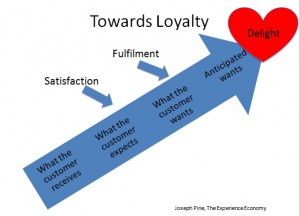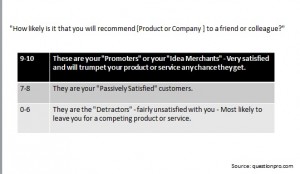Building and Measuring your Customer Loyalty
In Part 1 of our customer loyalty articles, we provided the facts and figures to support client loyalty as a key component of a business’s growth and success, along with establishing the difference between loyalty as a result of a relationship, and satisfaction as being related to a service.
Now we know that loyalty is so important, we take a look at how a loyal customer acts, how to build loyalty and how to measure it.
Building Loyalty
A Human Touch
Keep in touch with your customers
Generate customer goodwill
Show customers you care – remember what they like/don’t like
Make your customers more successful/happy
Reward clients for choosing you over the competition
Be flexible in your approach to meet their needs
Address concerns, complaints, suggestions
Communicate outcomes so that they know you listen to them
Treat your team well and they will treat your customers well
Train and develop your team
Measuring Loyalty
Most businesses are faced with a fairly straightforward question today – how do I measure success? Obviously looking at the balance sheet every month can give you some insights into how you are doing. However most of us know that this is too late in the game to be pro-active in terms of how you react to your customers needs.
We also understand that customer satisfaction and loyalty is intrinsically coupled to the well-being and long term growth of the company. In other words, the success of your company depends on how satisfied and loyal your customers are. It is also important to note that statistically, acquiring new customers is about ten times more expensive than providing continued services to existing customers. Quite simply, loyal customers decrease acquisition costs and increase profitability.
The question always arises: “How do I effectively gauge my company’s satisfaction and loyalty?”. It is not as difficult as you may think.
Amazingly, a single question can give you the insight you need:
“How likely is it that you will recommend [Product X or Company] to a friend or colleague?”
Have them rate the answer on a 0-10 Scale. You can then categorize the responses into three different categories:
Now the analysis is pretty simple. If you have 60-70% of your customer base with a score between 9-10 you have a “word-of-mouth” sales force working for you. They are happy with your product offering and are willing to put their reputation on the line for you by recommending your product or service.
Another important measurement is the “Net Growth/Satisfaction” score. This is the percentage of “Promoters” minus the percentage of “Detractors” for your business – this gives you a net indication of how many customers are effectively “growing” your company.
Now the question is: “Why is this approach more effective than traditional ‘Customer Satisfaction Surveys’?” The answer lies in the statistical term “sample bias”. Most traditional “Customer Satisfaction Surveys” tend to be long, cumbersome and demand a lot of time and attention from your customers. This leads to a very low “response rate” for your customer satisfaction surveys. This low response rate in turn does not accurately represent your customer base. For example, customers who are unhappy are not likely to go through a long customer satisfaction survey.
The other problem with traditional satisfaction surveys is that they are very difficult to analyze and produce ambiguous results – because of this they are not acted upon by upper management and dismissed.
On the other hand, if your customers get an email with a single question embedded, the response rate to such a small survey will be much higher. The higher response rate will eliminate the “sample bias” and you have the relevant data that you need.
A Loyal Customer Will…
Make regular repeat purchases
Purchase across multiple lines and levels of your company
Refer others to you
Demonstrate an immunity to the competition
Will tolerate the – occasional – lapse in support.
Start-ups and existing businesses
Although this is a helpful universal tip for your business, incorporating or starting up a company in a brand new environment can present all kinds of challenges. We can help you to start your business in a selection of European countries and will organise your visa and relocation requirements too. Speak to us today by leaving a comment below or contacting us directly through email.






I’m extremely impressed with your writing abilities and also with the layout to your weblog.
Is this a paid topic or did you modify it your self?
Either way stay up the excellent quality writing, it is uncommon to look a great blog like this one
today..